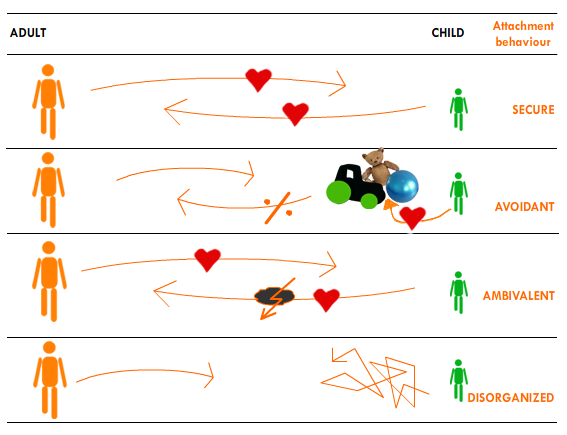Session 9/15
Page 4/10 The three insecure attachment behavioursThe three insecure attachment patterns
We will now look at the three examples of insecure attachment behaviour and discuss how to recognize and respond to each of the situations given below:
Each of these types of attachment strategies can be expressed more or less intensely. Therefore, there is a probability that your child in care only displays a few of the behavioural traits.
Many foster parents experience that they are met with rejection or anger – even if they practice secure caregiver behaviour. In this instance, Bowlby’s theory on the child’s internal working model proves very useful. Through experiences in early relationships with adults, the child has formed an emotional set of expectations. The child might not respond to your attempts to provide good and loving care for it because it may have certain negative expectations developed by earlier negative experiences of for example betrayal, mistreatment, lack of commitment etc.
The illustration exemplifies a caregiver practicing secure caregiver behaviour but the child meets her with an insecure response based on its earlier negative experiences, which has formed its internal working model.

